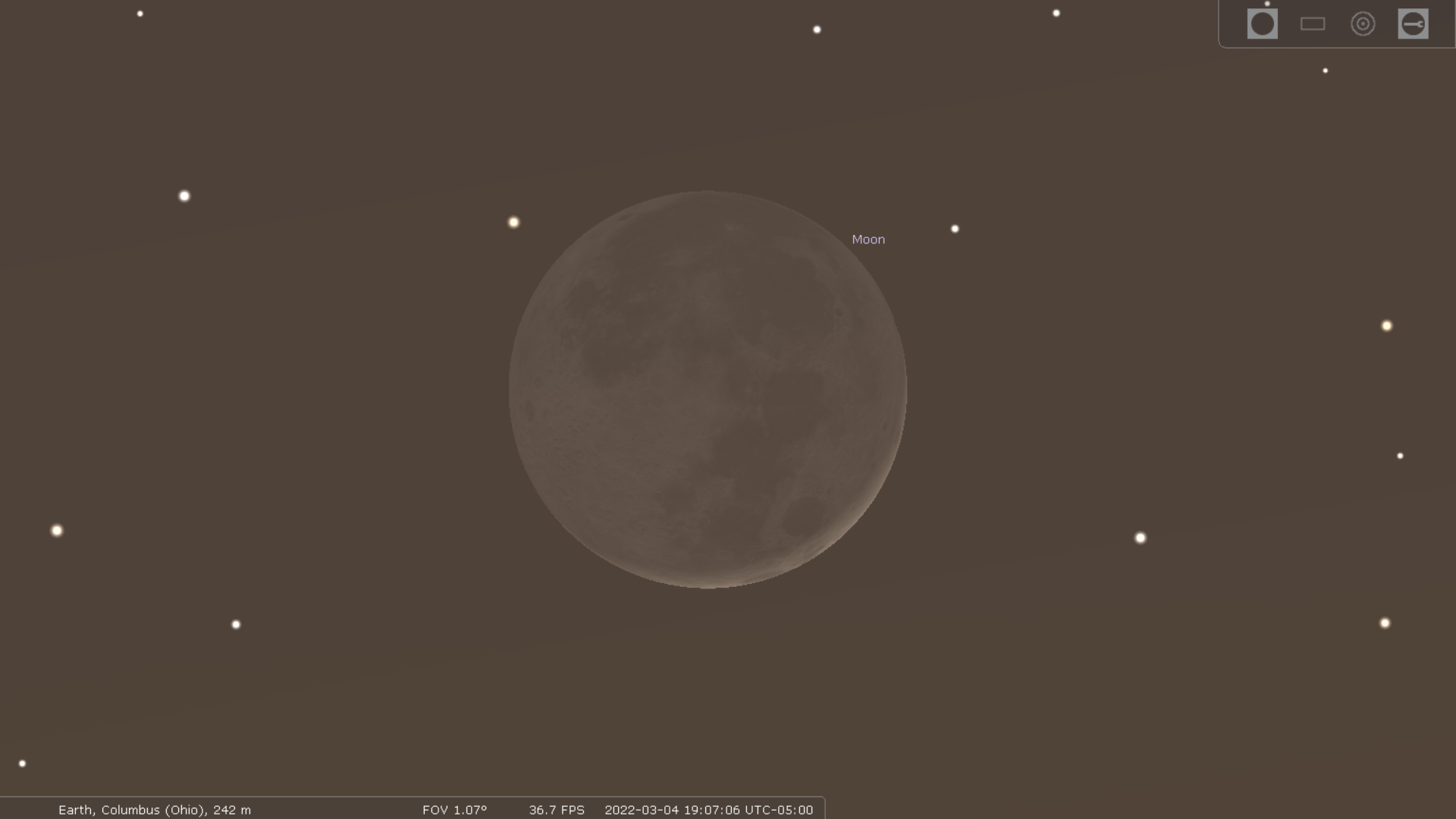Jared May: What's Up, March 1 - March 8, 2022
What’s Up This First Week of March
We finally made it to March and the weather is trying to push us toward spring. Some days this week will have daytime temperatures in the 50s. Once the sun has set temperatures will drop. Two hours after sunset temperatures are expected to be in the mid-40s (during the mid-section of the week). There will be mostly partially cloudy skies (to put it more optimistically, partially clear skies) during prime stargazing hours. Sunset this week is around 6:25 PM so all the faintest objects will be viewable just one hour after that.
Be on the lookout this week for the new moon, an inner and outer planet meetup, a springtime constellation home to a scary object, galaxy M87 (also home to a scary object), and the North Star – which might not be Polaris.
Wednesday, March 2nd, marks the new moon. This is great news for stargazers and astrophotographers because the night sky will not be washed out with the moon’s bright light. On Thursday and Friday, the moon will be very “aesthetic”. The one- and two-day-old crescent will be hanging low in the orange sunset skies with less than 6% of its surface illuminated. This is a great time to see earthshine. An effect that faintly lightens the darker side of the moon facing the earth.
The very thin crescent moon as seen on Thursday evening.
If you are awake early Wednesday morning, you have a good chance of seeing a planetary conjunction. Look low in the southeast skies at 6:30 AM to spot two bright objects very near each other. The top-most object is the outer planet Saturn and the bottom object is the inner-most planet, Mercury. Both of these objects can comfortably fit in a wide-field telescope’s or binocular’s field of view. Since Mercury is so small it will be featureless through binoculars and even a higher-power telescope. Saturn, however, will present its grand ring system. Try spotting the Cassini division within the rings. It may be challenging with Saturn so low in the sky.
Saturn and Mercury will be seen very close together on Wednesday morning.
Spring is not quite here yet, but you can catch some springtime constellations rising shortly after sunset. One such constellation is Boötes, which fully rises by 9:45 PM. Boötes can be relatively easy to spot since one of its stars is Arcturus, a bright star found by tracing the Big Dipper’s handle. The constellation itself is a herdsman but resembles a giant kite. Just off the north end of this constellation is perhaps the scariest place in the universe – Boötes Void. This is a region of space roughly 330 million light-years in diameter that is almost entirely empty. The giant region contains only 60 galaxies (a space this size would normally contain around 2,000 galaxies), so it is perhaps the loneliest place in the universe too.
One of the most empty places in intergalactic space is the Bootes Void. You can see it (or, not see it, that is) just off the spring constellation Bootes.
Rising around 9:30 PM and also near the Boötes region is galaxy M87. This galaxy can be observed with a telescope under dark skies as it is relatively small in our sky and shines at magnitude 8.6. Like most galaxies, this object can also be considered a “springtime object”. M87 is no normal galaxy, however, it is home to a supermassive black hole (M87*) billions of times the mass of our sun. This black hole’s image was released in 2019 and it broke physics and astronomy news. Due to some whacky physics with spinning black holes and magnetic fields, M87* spews some of its accreted material through something called relativistic jets. These jets look like beams of light extending from the spin axis of the black hole caused by the material being accelerated to near the speed of light! (IMAGE: https://www.nasa.gov/feature/goddard/2017/messier-87)
A closeup view of the enormous galaxy M87 with its jet, created by the supermassive black hole at its core.
Any time of the year in the northern hemisphere stargazers should be able to spot the North Star. It is a great starting point for star hopping when navigating the night sky and for polar aligning your German-equatorial telescope mount. Did you know that Polaris has not always been the North Star? Due to the motion of stars through the galaxy but mostly the precession of the earth’s rotation the “north star” will change over time. In 3000 BC the “North Star” title was given to Thuban (a star in Draco). By the year 4200 AD the north star will become Errai.
Due to “precession of the Equinoxes”, a new north star will have rolled into view in two millennia.
Get outside and enjoy the warmer nights this week. Grab a chair, a warm coat, and a good set of binoculars or a telescope and enjoy the vastness of the cosmos from our small “mote of dust suspended in a sunbeam” we call earth. During the partially clear nights, be on the lookout for the new moon and young crescents, a planetary conjunction, a constellation with a lonely part of the universe, a galaxy with a very active supermassive black hole, and ponder about the precession of the earth and how it will change our night skies over several generations.
Clear Skies!




